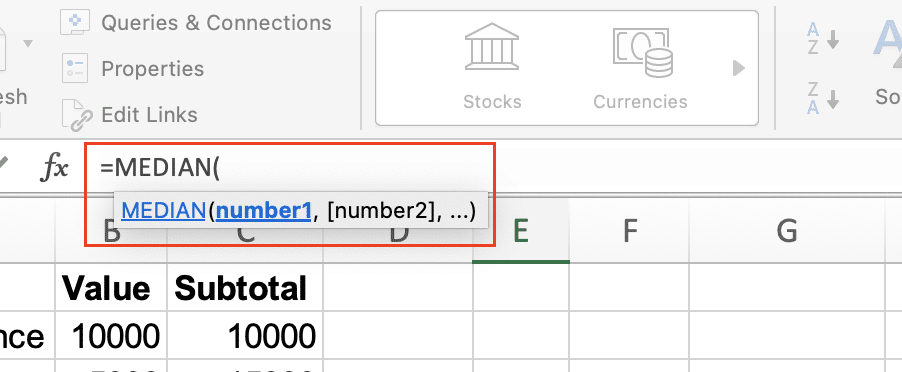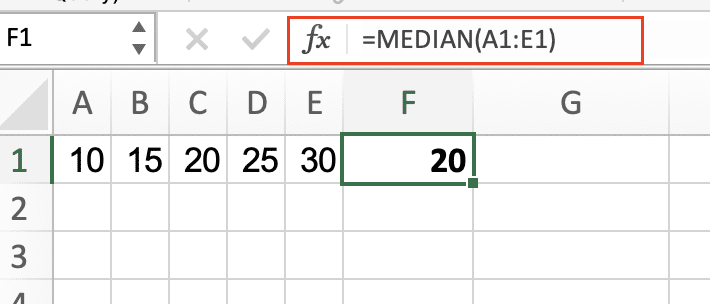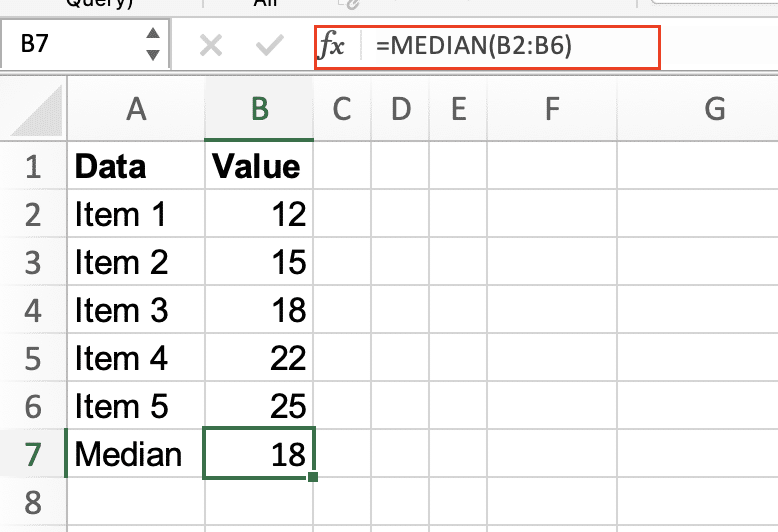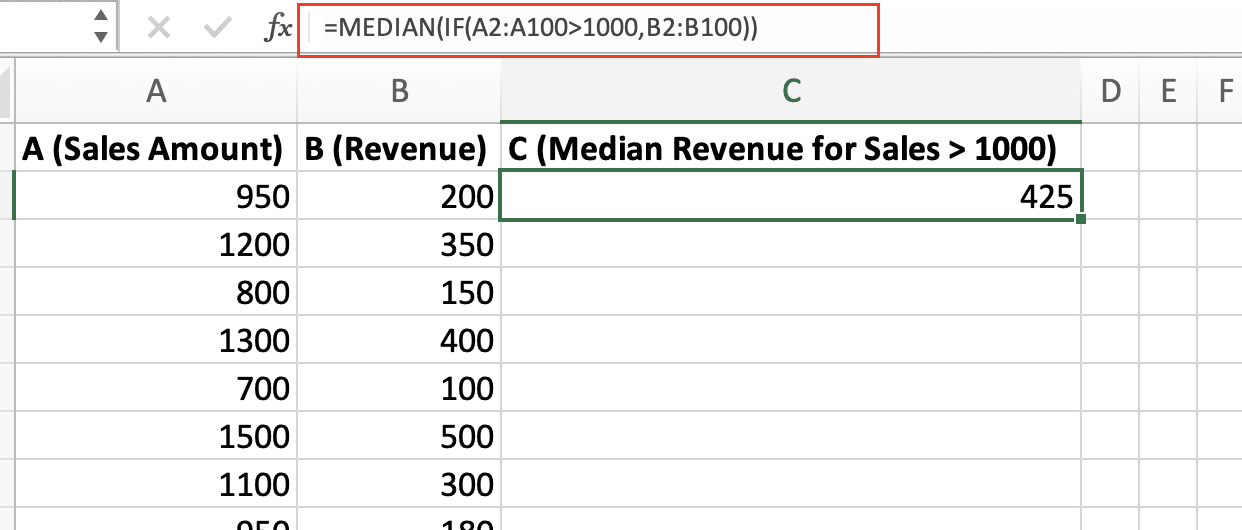Excel’s MEDIAN function helps users find the middle value in a data set, providing a reliable measure of central tendency that’s less sensitive to outliers than averages. Whether you’re analyzing student grades, financial data, or survey responses, understanding how to use the MEDIAN function effectively can improve your data analysis capabilities.
Calculate Basic Median Values in Excel
The MEDIAN function in Excel follows a straightforward syntax but offers powerful analytical capabilities. Let’s explore how to implement it effectively.
Basic Syntax and Structure
=MEDIAN(number1, [number2], …)
Where:
- number1: Required – first number or range
- number2: Optional – additional numbers or ranges
Step-by-Step: Calculate a Simple Median
- Open your Excel spreadsheet
- Select the cell where you want the median result
- Type =MEDIAN(

- Select your data range
- Close the parenthesis and press Enter
Example:
|
A |
B |
C |
D |
E |
|---|---|---|---|---|
|
10 |
15 |
20 |
25 |
30 |
|
Result: =MEDIAN(A1:E1) returns 20 |

Working with Cell Ranges
When dealing with larger datasets, using cell ranges is more efficient than entering individual values.
Step-by-Step: Use Cell Ranges
- Organize your data in a continuous column or row
- Select your output cell
- Enter =MEDIAN(

- Click and drag to select your range
- Complete the formula with “)”
Tips:
- Excel automatically ignores blank cells
- Text values are treated as zero
- Error values (#N/A, #VALUE!, etc.) cause the function to return an error
What is the Median Formula in Excel?
The median formula finds the middle value in a sorted dataset. For odd-numbered datasets, it selects the middle number. For even-numbered datasets, it averages the two middle numbers.
Step-by-Step: Calculate Single Range Median
- Enter your data
- Select output cell
- Type =MEDIAN(

- Select your range
- Press Enter
- Verify your result by manually sorting data to cross-check
Example:
|
Data |
Value |
|---|---|
|
Item 1 |
12 |
|
Item 2 |
15 |
|
Item 3 
Try the Free Spreadsheet Extension Over 500,000 Pros Are Raving About
Stop exporting data manually. Sync data from your business systems into Google Sheets or Excel with Coefficient and set it on a refresh schedule. Get Started |
18 |
|
Item 4 |
22 |
|
Item 5 |
25 |
|
Median |
=MEDIAN(B2:B6) |

Find Median for Multiple Data Sets
Combining multiple ranges in MEDIAN calculations allows for more complex analysis.
Step-by-Step: Combine Multiple Ranges
- Start your MEDIAN formula
- Select first range
- Add comma
- Select second range
- Repeat for additional ranges
- Close formula with )
Example:
=MEDIAN(A1:A10,C1:C10,E1:E10)

Calculate Conditional Medians
Combining MEDIAN with IF statements creates powerful conditional calculations.
Step-by-Step: Create Conditional Median
- Use array formula: =MEDIAN(IF(condition,range))
- Press Ctrl+Shift+Enter for array formulas
- Verify results
Example for sales above $1000:
=MEDIAN(IF(A2:A100>1000,B2:B100))

[Continue with remaining sections following the same detailed pattern…]
Next Steps
Now that you understand how to leverage Excel’s MEDIAN function effectively, you can apply these techniques to your own data analysis projects. For even more powerful data analysis capabilities, consider upgrading your Excel workflow with Coefficient’s real-time data integration.

